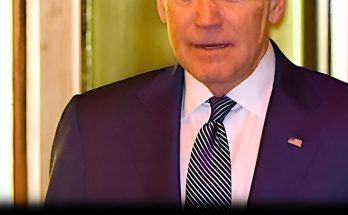The year 1795 marked the second year of U.S. silver dollar production, and the United States Mint, still struggling to produce a consistent product, changed the design for the dollar coin midyear from the Flowing Hair type of 1794 to a new Draped Bust style that would feature on silver and copper denominations at the beginning of the 19th century.
Chief Engraver Robert Scot’s portrait of Liberty on the obverse is said to have been modeled after a Philadelphia socialite based on a drawing by the artist Gilbert Stuart – even though no such sketch survives and the entire story relating to Stuart’s involvement has been called into question. The design change was promoted by Mint Director Henry William DeSaussure (and perhaps encouraged by President George Washington) in an effort to improve all U.S. coins but especially those made of silver. John Eckstein prepared the reverse design.
Because of the cleavage displayed by Liberty, some critics commented on the transformation of Liberty from a youthful, presumably innocent, maiden to a “buxom matron”, though the design is today a favorite of those who collect early American coins. The basic design of the reverse remained but there were subtle changes made between 1794 and 1795, particularly to the wreath and the eagle’s perch. These large coins sometimes show adjustments marks made by the Mint to reduce the weight of the planchet prior to striking. The silver dollar was considered the cornerstone of the U.S. monetary system, an indicator of America’s ability to produce a circulating precious-metal coin of the same value as the more common Spanish and Mexican pieces of eight. The Draped Bust Small Eagle type lasted only four years, superseded in 1798 by the Large Eagle reverse.
How Much Are Draped Bust Dollars with the Small Eagle Reverse Worth?
A few thousand Draped Bust, Small Eagle Dollars are listed in census/population reports, though not all dates and varieties are equally represented. No Proofs are known, but a couple of Specimen strikes have been identified.
Prices start at $3,000 to $4,000 for the more common issues up to the grade of Fine 12 but advance sharply finer. Mint State examples for common dates start at about $20,000 and are significantly more expensive in Choice and Gem grades. Some of the finest examples have sold for over one million dollars.
The 1797 9×7 Stars, Small Letters and the 1798 15 Stars are more expensive than other dates and varieties.
The following is a list of notable Draped Bust silver dollar collections:
- F.C.C. Boyd (sold January 1945)
- Jerome Kern (sold May 1950)
- Milferd Bolender (sold February 1952)
- D. Brent Pogue Family (sold 2015)
- Bruce Morelan (sold starting in 2020)
In-Depth Date Analysis on CoinWeek

Extended Coverage on CoinWeek
- 1798 Small Eagle Draped Bust Dollar – Jack Young’s Fun With Fakes
- Struck Counterfeit Coins: A Family of Struck Fake Draped Bust Dollars
Numismatist Jack Young and the “Dark Side” group write about their encounters with a fake 1798 Small Eagle Draped Bust Dollar and an entire related batch of struck counterfeits.
Design
Obverse:
The obverse prominently displays Liberty in the center of the coin, her long flowing hair swept back and tied with a ribbon. Folded drapery is placed across the bust and over her shoulder. On some 1795 dollars, Liberty is centered on the flan; on others, the portrait is crowded to the left side. Six-pointed stars, the word LIBERTY at the top, and the date at the bottom form a circle inside the denticulated rim. The number of stars and their placement varies. In 1795 and 1796, there are 15 stars: eight to the left and seven to the right. The number of stars was increased to 16 in 1797; some examples with 10 stars left and six stars right, others with nine stars left and seven stars right. In 1798, the number of stars was back to 15 (eight left and seven right) and then down to 13 (seven left and six right).
Reverse:
The reverse features a right-facing eagle perched on clouds more explicitly portrayed as such than the ambiguous perch (usually described as a rock) of the previous Flowing Hair type. Around the eagle is a circle formed by two branches–olive on the left and palm on the right–tied at the bottom with a bow and barely separated at the top. The well-spaced legend UNITED STATES OF AMERICA forms nearly a complete circle inside the denticulated rim. No denomination or mintmark appears on the coins; all were minted in Philadelphia.
Edge:
The edge is lettered (HUNDRED CENTS ONE DOLLAR OR UNIT), with ornamental figures between the words.
Varieties
Several varieties are known, including the 1795 Off-Center Bust; the 1796 Small Date, Small Letters and Large Letters; the 1796 Large Date, Small Letters; the 1797 10 Stars Left, 6 Right and 9 Stars Left, 7 Right; and the 1798 13 Stars and 15 Stars.
Draped Bust Dollar, Small Eagle Coin Specifications
| Draped Bust Dollar, Small Eagle | |
| Years of Issue: | 1795-98 |
| Mintage (Business): | High: 327,536 (1798, combined Small and Heraldic Eagle reverses); Low: 7,776 (1797) |
| Mintage (Proof): | High: 223 (1901); Low: 20 (1874, 1875, 1877, 1888; 20 or fewer per year estimated before 1859) |
| Alloy: | .892 silver, 108% copper |
| Weight: | ±26.96 g |
| Diameter: | ±39.00-40.00 mm |
| Edge: | Lettered: HUNDRED CENTS ONE DOLLAR OR UNIT (ornament between words) |
| OBV Designer: | Robert Scot | John Eckstein |
| REV Designer: | Robert Scot | John Eckstein |



